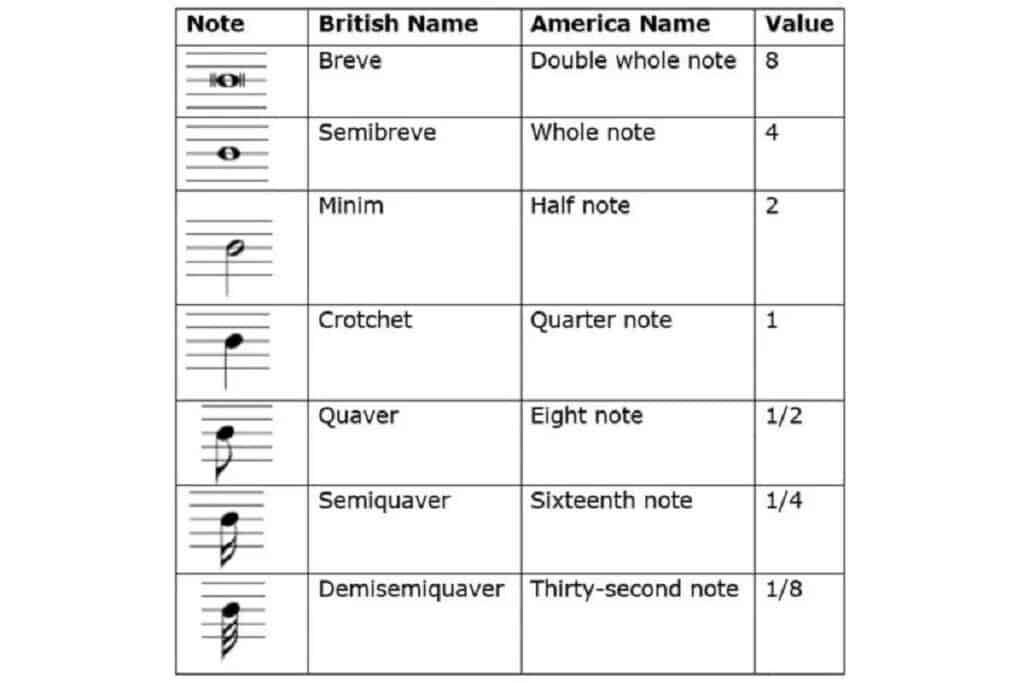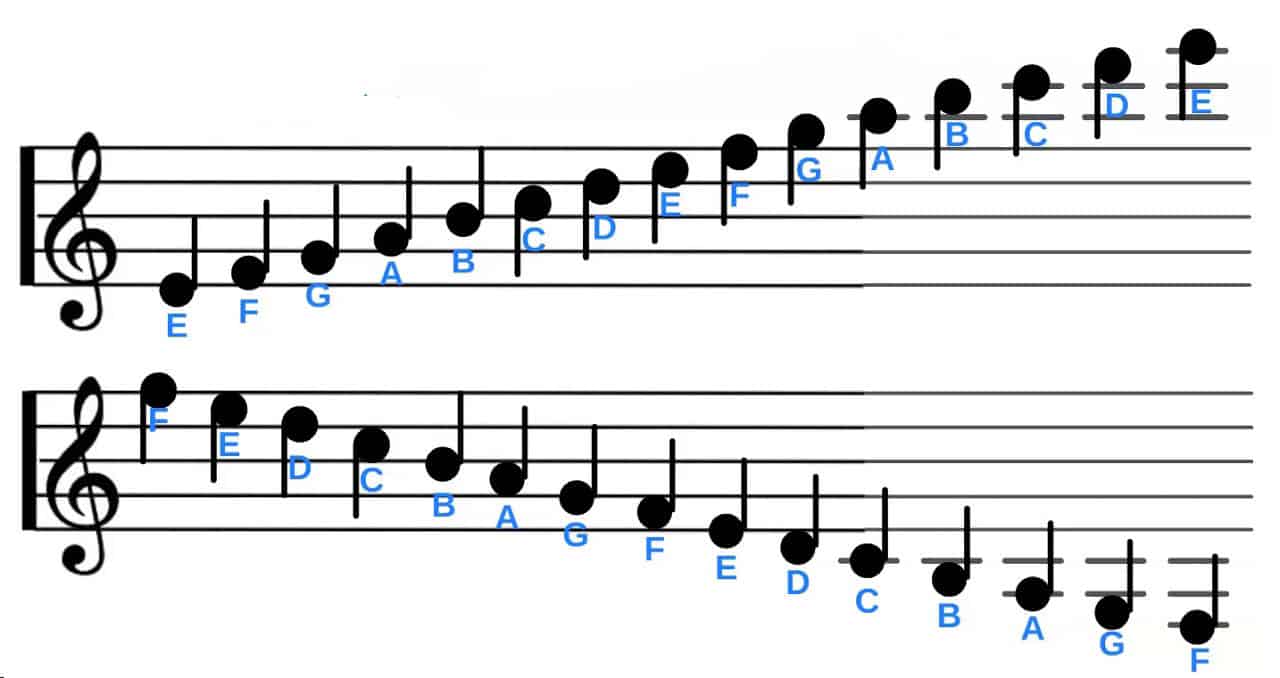A music note describes the pitch and the duration of a sound. In musical notation, a note is a symbol used to represent a specific pitch and duration in written music. It is a visual representation of a sound or musical tone and is used to communicate musical ideas between composers, performers, and listeners.
Music notes are typically written on a staff, which is a set of horizontal lines and spaces used to represent different pitches. The position of a note on the staff indicates its pitch, while its shape and duration indicate how long it should be played. Music notes can vary in duration from very short (such as a 64th note) to very long (such as a whole note) and can be combined to create melodies, chords, and complex rhythms.
How do I Identify a music note?
To identify a music note, you need to look at its position on the staff and its shape. Here are the basic steps to identify and read a music note:
Look at the position of the note on the staff. Each line and space on the staff represents a different pitch. The notehead (the round part of the note) should be on a line or in a space on the staff.
Determine the name of the note based on its position on the staff. The names of the notes on the lines of the treble clef staff (from bottom to top) are E, G, B, D, and F (mnemonic: “Every Good Boy Does Fine”). The names of the notes in the spaces of the treble clef staff (from bottom to top) are F, A, C, and E (mnemonic: “FACE”).
Determine the duration of the note based on its shape. The shape of the notehead (round or oval) and the presence or absence of a stem and flags (or beams) indicate the duration of the note.
Once you know the name and duration of a musical note, you can play or sing it at the correct pitch and rhythm. With practice, you can quickly identify music notes and read sheet music fluently.

Note Names
The note names in Western music are A, B, C, D, E, F, and G. These notes are named after the first seven letters of the alphabet.
In Western music, the standard chromatic scale consists of 12 distinct pitches, which are named as the letters A, B, C, D, E, F, and G, with five additional sharps/flats in between. The sharps/flats are named differently depending on the key signature in use. They include C sharp/D flat, D sharp/E flat, F sharp/G flat, G sharp/A flat, and A sharp/B flat.
In music notation, each note is represented by a notehead (the round part of the note) and a stem (if the note duration is a half note or less). The position of the note on the staff (the set of five horizontal lines and four spaces) indicates its pitch.
The names of the notes in the treble clef staff (from bottom to top) are E, F, G, A, B, C, D, and E, and the names of the notes in the bass clef staff (from bottom to top) are G, A, B, C, D, E, F, and G.
The note names can be modified by accidentals (sharps, flats, and naturals) to indicate a change in pitch.
Note Values
In Western music notation, note values represent the duration of a musical sound. There are several standard note values used in written music, and each note value is represented by a specific symbol. Here are the most common note values and their corresponding symbols:
- Double whole note (or Breve) – represented by an open circle with one or two vertical lines on either side
- Whole note (or Semibreve) – represented by an open circle
- Half note (or Minim) – represented by an open circle with a stem
- Quarter note (or Crotchet) – represented by a closed circle with a stem
- Eighth note (or Quaver) – represented by a closed circle with a stem and one flag
- Sixteenth note (or Semiquaver) – represented by a closed circle with a stem and two flags
- Thirty-second note (or Demisemiquaver) – represented by a closed circle with a stem and three flags
- Sixty-fourth note (or Hemidemisemiquaver) – represented by a closed circle with a stem and four flags
The duration of each note value is relative to the whole note, with a whole note representing one measure of music. For example, a half note lasts for half the duration of a whole note; a quarter note lasts for one-fourth the duration of a whole note, and so on. The combination of note values creates the rhythm and tempo of a piece of music.

Solfège
Solfege (also spelled “solfeggio” or “solfa”) is a system of musical notation that uses syllables to represent the pitches of the diatonic scale. It is a tool that musicians use to develop their ability to identify and sing musical notes and to understand the relationships between different notes and chords.
In solfege, each note of the scale is given a syllable name. The most common system of solfege uses the syllables do, re, mi, fa, sol, la, and ti, which correspond to the notes of the major scale. The syllables are used to sing the melody and can also be used to help musicians develop their ability to identify intervals and chords.
| C | D | E | F | G | A | B |
| do | re | mi | fa | sol | la | ti |
Solfege is often used in vocal training, especially in classical music, to help singers learn their parts and to develop their pitch accuracy and ear training. It is also used in music education to teach children how to read and write music and to help them develop their musical skills. The use of solfege can help musicians to internalize the sound of the scale and to develop a strong sense of tonality, which is essential for successful music performance and composition.
Go to next lesson: What Is Timbre In Music?
Go to previous lesson: What Is Music?
Back to: Module 1

